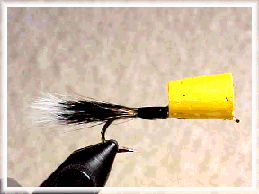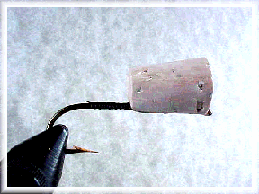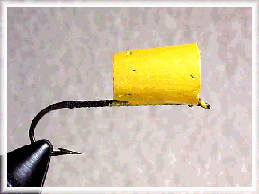|
Lefty's Bug
For smallmouth bass, bluegills and just about any
panfish a Lefty's Bug seems, at least in the experience
of everyone I know who fishes it, to be irresistible.
Although it is not an imitator in the sense of representing
a specific food, it's qualities of attraction far outweigh
any that we mere mortals will ever comprehend. It really
doesn't look like anything, and that, is as Lefty Kreh
intended when he invented this fly to catch smallmouth on
his beloved Potomac River, near his home in Maryland.
This is a very simple bug to tie, and while it can be
modified by adding legs and eyes and such, I have never
found any embellishment to improve the results I achieve
with the basic fly. Tie it plain, tie it fancy, have fun
with it, after all, isn't that what flyfishing and fly
tying are really about ?
Materials List:
Hooks: Size 2 - 14 streamer Mustad 9672 or equal (size 8 shown).
Thread: Black - 6/0 thread (or 3/0 if that is what you have).
Tail: Squirrel tail, gray or red (gray shown).
Body: Small corks (available at craft stores),
Paint: Yellow Model Paint (Testors is as good as any).
Tying Instructions:
1. Tie on at the eye of the hook, wind to the
bend and back to the eye, covering the entire shank.
Now tie off and cut your thread. (I usually tie 1
or 2 dozen at a time, and do each step on all of them
before I proceed to the next step. Of course, you may
do as many as you wish.
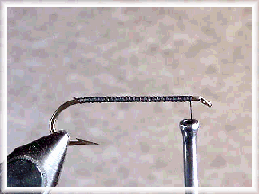
2. Get out a hacksaw double blade, or a hobby
saw, or, as I prefer, a Dremel tool with two metal
cut off blades stacked in the mandrel, and cut a
groove fore and aft about 1/8" or so deep. We want
to encompass the entire shank with this cork, but,
we do not want to encroach on the gap, especially
in the smaller sizes.
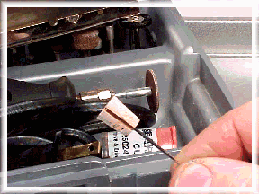
|

